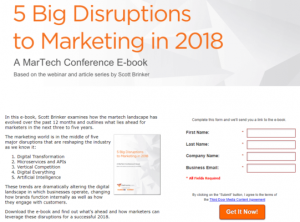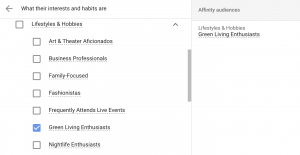If you’re a small business owner or marketer, there’s a good chance you want more people to organically land on your website. As more visitors make it to your site, you can expect to see more email signups, sales, and brand engagement. Consequently, you’ll have more opportunities to connect with your audience, which is crucial for consistent growth.
The thing is, getting website traffic isn’t always easy. If you don’t proactively work to keep consumers engaged with a top-notch site, you’re going to have a hard time building a well-known, profitable brand.
There are several ways you can fine-tune your website and generate more traffic. We are going to go over a few actionable strategies you can start using today. You’ll also learn how optimizing your website can lead to an improved retention rate and build customer trust.
Let’s get started!
Look for Opportunities to Boost Performance
Did you know that the average consumer expects a page to load in 2 seconds or less? This startling statistic is positive proof that your website’s performance can significantly impact your traffic.
When users have a positive on-site experience, they are less likely to unexpectedly leave. You can dramatically lower your bounce rate and improve engagement and signups by simply tweaking your site’s performance.
There are several ways to speed up your website. You could do one or more of the following:
- Use a caching plugin
- Separate long-form blog posts into pages
- Compress your images
- Ensure all of your software is up to date
We also want to stress the importance of optimizing your website for mobile users. A staggering 58% of all website traffic in the United States comes from mobile devices, and this trend is showing no signs of slowing down.
If you want to ensure that you’re maximizing your traffic, you should make sure your site is mobile-responsive. The easiest way to implement a responsive design is to use themes and drag-and-drop builders that show what both desktop and mobile users will see.
Use these tools to adjust parts of your website, such as navigation. You want to make it so users across all devices can quickly and easily sign up for your email newsletter, browse your product catalog, read your blog, and generally engage with your brand.
Improve On-Page SEO
Search engine optimization (SEO) is a fundamental part of boosting your traffic. When a user types a keyword or phrase into Google that’s relevant to your product or content, you want them to see your website. When you consider that 68% of all online experiences start with a search engine, it’s easy to see how this strategy can help get more eyes on your site.
You can increase the quality and quantity of your traffic through search engines by enhancing your on-site SEO. On-site SEO encompasses all aspects of your website, from blog content to page URLs.
We suggest using Google’s Keyword Planner to discover new keywords that you can include strategically throughout your site. You can see how many people search for specific keywords, as well as the competition.
Ideally, you’ll want to find plenty of keywords that have medium-high searchability and low-medium competition. Include these words naturally throughout your site. Google crawlers will have an easier time understanding your content’s intent, which means your target audience is likely to see your brand when they search these words and phrases.
Simply put, fine-tuning your on-site SEO will make your site more discoverable, which can lead to a dramatic boost in traffic.
Strategically Keep Visitors on Your Blog
Despite your best efforts to improve your site’s performance and searchability, many users will still leave before fully engaging your website. If you want to reduce your bounce rate and keep people interested, consider developing your company blog.
Believe it or not, businesses that blog see 126% more leads when compared to sites without a blog. This statistic tells us that consumers are far more interested in long-term experiences and value from brands across all industries.
If you want to see the same kind of traffic and lead generation, creating customer-centric content is necessary. We advise taking the time to get to know the goals and pain points of your target audience. When you understand why visitors land on your page, you can create relevant content that keeps them coming back, even if they are not ready to buy your product.
It’s possible to get to know your audience by posting polls and surveys on your site. Encourage users to voice their opinion and mention topics they want to read about in the future.
Similarly, you can use social media to discover what kind of content people want to read. You may be shocked to learn that over 51% of the global population uses social media. Websites like Facebook, Twitter, and YouTube are the perfect place to gather feedback that you can take back and implement on your website.
We also want to point out the importance of writing conversational content. Readers want to engage with brands that talk to them like a friend. If you write compelling, conversational blog posts, readers are likely to stay on your website for longer and find more value, which leads to more traffic.
Simplify Complicated Pages and Forms
Finally, let’s talk about simplifying pages and forms on your website. Poorly designed forms and pages are among the top reasons potential customers get frustrated and go to a competitor’s website.
Imagine visiting a site and trying to sign up for their email list; only, their form is loaded with unnecessary questions and is difficult to navigate on your smartphone. Would you stick around? Or, would you look for another business that offers a better user experience? Odds are, you’re a part of the latter group, and you’re not alone.
You’ll be happy to know that it’s possible to find what pages and forms are causing consumers trouble. Review your Google Analytics account, and you can see when and where people leave your site. If you notice that 95% of people are leaving your website in the middle of signing up, it may be time to simplify your contact form.
After you make changes to your forms and landing pages, make sure to measure your results. Your goal is to determine if the adjustments you made led to more people completing your form. If so, you can expect to see more traffic as these new subscribers get introduced to your products and content.
Final Thoughts
There are plenty of ways to fine-tune your website and grow your traffic. The tips we outlined today should give you a good idea of where to start making small changes. Use the advice here and take the needs of your customers into consideration. Before long, you’ll begin to see more visitors, engagement, and sales.
Business & Finance Articles on Business 2 Community
(65)







